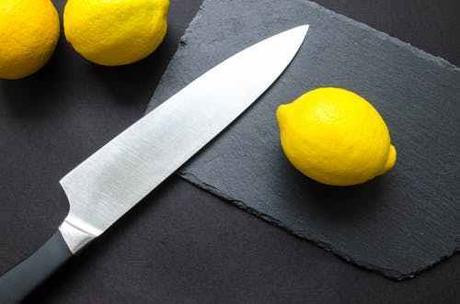
Investing In A Good Chef's Knife
Investing in the right kitchen equipment is the secret to enjoying cooking. Most people will claim they hate cooking, but it could be because they have not invested in the right cookware. You'd be surprised to note that there is a lot of 'junk' equipment that could be re-sold or given away to create space in your kitchen. Most often, some of the equipment has multiple uses.
For most people, cheap products are what make cooking seem hard while in the real sense it should be fun. You find people saying that even a 15-minute recipe that is easy to follow is hard. Invest in the best quality products to help make your cooking more natural and fun.
One of the must-haves in your kitchen is a chef's knife. Also known as the French knife, it has multiple uses such that you may not need any other knife. You don't need a 14-piece knife collection which ends up taking your space, and you may never even use most of them.
Unbelievably, the chef's knife performs numerous actions which could be practically any task. The range could be from chopping vegetables to peeling garlic and so much more.
Uses of the chef's knife
A chef's knife blades range from 6 to 14 inches in length. It has several applications. Apart from what it was traditionally known for, to cut big chunks of meat, there are several ways it can be used.
Peeling Garlic
Peeling garlic can be a daunting task; the trick is bruising the cloves first. With your chef's knife, place the flat blade on the clove and press down. The garlic skin will peel off, and you can crush or chop the garlic depending on your preference. See, that was simple!
Cracking open a coconut
Who said a knife couldn't crack a coconut? Once you've rinsed your coconut, hold it over a bowl, with the back side of the knife, tap the coconut forcefully. Turn the coconut as you repeat the action until it cracks open.
Scaling fish
Do you love fish? If you ever need to scale a fish, the chef's knife will come in handy. Slice off the fins using the sharp side of the knife. Hold the tail of the fish and scrape off using the dull side of the blade down to the fish to scale.
Bruising lemongrass
Lemongrass is widely known as a culinary herb. Lemongrass can be used in tea, soups, stews, poultry, and fish.
For lemongrass, the stems are tough which makes the chef's knife a perfect tool to trim them. Bruise them using the knife and trim them and use them for your stews.
Chopping board clearance
How do you clear your chopping board after you've chopped your coriander leaves or onions? After cutting them, you need to transfer them to the necessary bowl or pan to fry depending on your meal.
People often make the mistake of transferring them using the sharp blade side which makes the knife end up being blunt. However, the best way is by flipping the knife so that you use the naturally blunt side of it to transfer the coriander leaves.
Cutting large foods
Ideally, this knife should help you split large foods such as cantaloupe. If your knife is 10 inches, you can safely hold the handle and the tip to facilitate the cutting process. Small knives are risky when you are cutting large things because it is easy for them to slip off your hand.
How much to spend on a chef's kitchen
A chef's knife accounts for 90% of the daily kitchen tasks. The more reason you should invest in a high-quality one. Ideally, for good performance, you should ideally spend about $100 for the knife. If you need to take out a personal loan for such an investment, it will be worth the money. You can check out the options available for personal loans for people with good credit here.
This particular knife is either forged or stamped depending on how it is made. It comes in either stainless steel, carbon steel or ceramic.
Simple care routine
1. For the chef's knife, most companies will instruct you not to wash the knife in the dishwasher. It may damage the blade, or the wooden handles may not hold up well. Ensure that you dry the knife before storing.
2. Don't cut on hard surfaces such as glass boards as they make the edge dull. Preferably use plastic cutting boards.
3. Always read the manufacturer's directions on how to sharpen the knife.
4. Store your knife where it does not come into contact with other knives to prevent damaging the blades.
Investing in a chef's knife is a long term investment that will serve you for long. Purchase this knife and see its numerous uses. If you have never used it before, be cautious and practice severally. With time, it gets better.
(Visited 8 times, 8 visits today)


